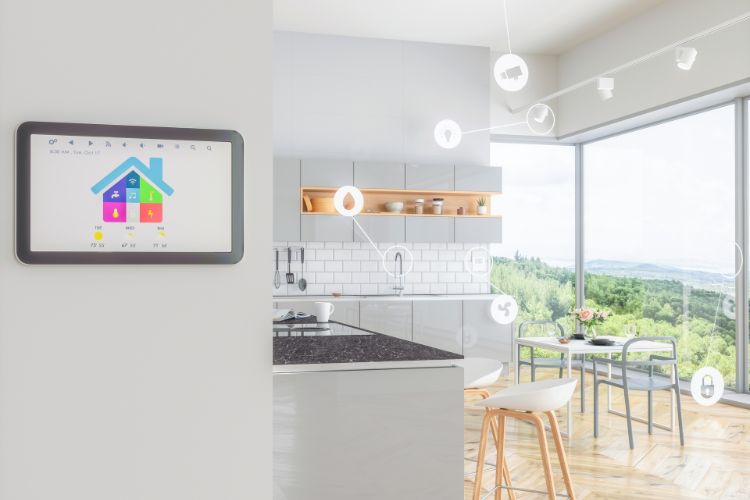Healthy homes have healthy air. More than 55 million households, according to Parks Associates, are interested in a product that removes dust/allergens and purifies the air. About 47% of households with Internet access report that one or more residents has a health condition that makes them sensitive to indoor air quality. The COVID-19 pandemic highlighted health risks in air quality for many consumers, increasing interest in smart products that can measure and deliver a healthy, clean environment.
Parks Associates points out that their research shows family caregivers increasingly turn towards technology, especially monitoring services, in providing care for loved ones. Compared to 2020, family caregivers are several times more likely to report taking a tested action to care for their loved one, including purchasing solutions to monitor health or buying a communications tool such as a smart display.
Technology, not just air conditioning, is a resource for improving quality of life these days. But all that technology, dependent as it is on electric power, comes at a cost: 50% of U.S. internet households earning more than $100,000 annually say their electricity costs are too high. Parks Associates research also reveals consumer interest in renewables is growing stronger—56% of U.S. internet households would select renewables as an energy source if costs were the same and 36% say they would pay more to use power from renewable sources.
Parks Associates’ latest consumer study, “Smart Energy at Home: Renewable, Responsive, Resilient,” reveals most consumers want to use less energy and view energy costs as too high. The firm shared insights into consumer adoption of smart energy devices and interest in energy management use cases during the 13th annual Smart Energy Summit: Engaging the Consumer.
Higher energy costs drive higher dissatisfaction, claims Parks Associates, as evidenced by the number agreeing that their bills are too high, even among higher-income households. Bills are particularly higher for larger families and so is their dissatisfaction. There is a large opportunity for utilities to market-energy programs, such as demand response, and for device makers to sell energy-saving and energy-management devices to families who are looking for ways to reduce their power bills.
Research shows 45% of broadband households made energy-saving renovations or added major energy devices in 2021, which is an all-time high. While smart thermostat adoption has been flat the past few years, consumers are receptive to the benefits of solar panels, including nearly half (44%) who value the savings and one-third (34%) who value the energy independence.
We all need to be smarter about our energy usage at home, and technology can help with that. The important thing is to balance the savings from the technology against the costs, both of the initial implementation and the long-erm energy requirements. “Using systems that work to determine when someone is home or not (and where they are in the home) and then proactively making basic decisions, like controlling lighting, give opportunities to consume only the energy needed at that specific time,” says Colin Billings, CEO & Founder, Orro.
Orro’s professional-grade intelligent lighting and home-control system now integrates with the popular Alarm.com home-security system and application. As a unified smart-living system in the form factor of a standard-sized light switch, Orro’s product reshapes how homeowners experience and interact with lighting and other smart home devices.
With the combination of Orro and Alarm.com, users are now able to control Orro’s lighting features through the Alarm.com app, while adding Orro switches to their Alarm.com scenes. As a result, the Alarm.com system will not only adjust thermostats, lock doors, and arm security systems, but also automatically activate and deactivate lighting anywhere there’s a connected Orro switch.
By detecting motion, sound, and light with built-in sensors, Orro One Pro and Orro S switches respond with the desired amount of light, while learning and adapting based on homeowners’ habits and preferences. Adding Orro to the Alarm.com ecosystem just requires Alarm.com’s device wizard feature. Once an account is linked, Orro’s switches allow for remote control and automation of lighting and lighting scenes connected to system events, saving energy, and money for the homeowner.
Want to tweet about this article? Use hashtags #construction #sustainability #IoT #5G #cloud


